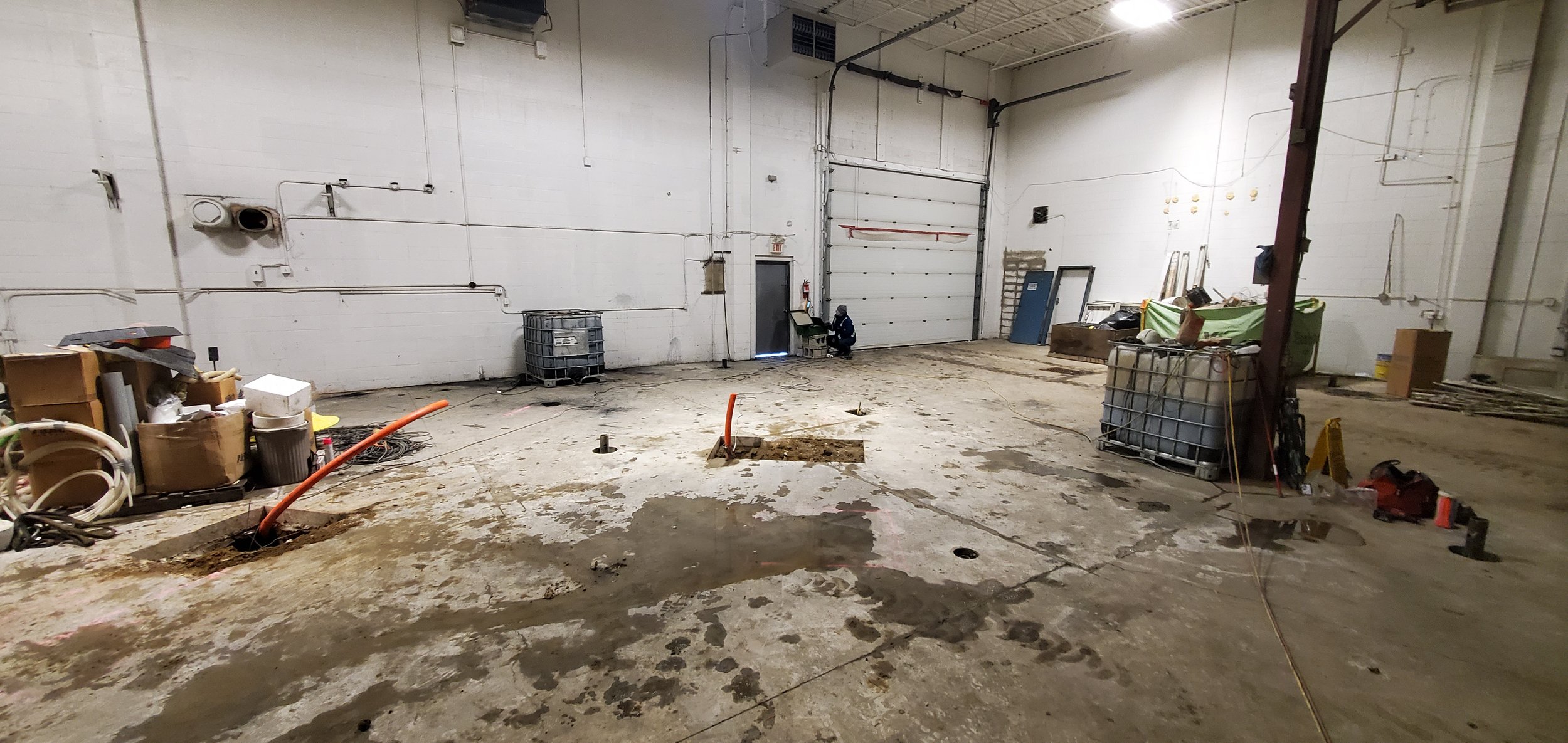
Case Study: Aerobic PCE Degradation
Aerobic PCE Degradation
Study and remediation of site is ongoing, but early results are promising.
Warehouse located in Edmonton, AB.
Site was vacant for 15 years due to PCE contamination.
Contamination is 1-4 m below building foundation and includes a perched water table that moves to northeast.
Soil concentrations of PCE in core of plume were 3990 ppm and 160 ppm in groundwater.
Initial remediation estimates by consultant would have required 4000 cubic meters of soil to be removed to achieve risk management
Technical Objectives
Why Aerobic?
Aerobic remediation should minimize formation of difficult breakdown products like TCE, DCE, and VC. Anaerobic remediation can result in methane generation that is problematic that is not seen in aerobic remediation pathways.
Significant Reductions in Soil and Groundwater – Reductions need to be greater than potential lab/environmental media noise.
Minimize Production of Problematic Daughter Products – Vinyl Chloride can accumulate in anaerobic remediation systems. An aerobic pathway should negate this.
Wells Surrounding, Deeper Than, and Downgradient of Treatment Areas Need to Remain Stable or See Reductions – Demonstrate that contamination is not just being moved.
Minimal Rebound Following Remediation (TBD)
BEFORE
AFTER
PCE Field Study Solution
Microbes were derived from site that were capable of survival on PCE as a sole carbon source under aerobic conditions.
A benchtop study showed formation of dechlorinated daughter products by these microbial isolates.
Microbes were deployed in combination with an electrooxidation system, oxygen release compound, and small quantities of BAM.
Electrodes doubled as injection points.
Additional delineation by consultant showed shallow contamination that was not previously defined, horizontal electrodes were placed to address this.
PCE Field Study Results
Objective for site is to achieve risk management to allow occupation of building.
It is anticipated that 7 of 9 properties will be eligible for risk management following additional vapour testing.
PCE reductions in center of soil plume exceed 99.9%.
PCE reductions in groundwater have stabilized at 90% and will be monitored long-term.
Dechlorinated daughter products have been observed.
Downgradient wells are stable and deep monitoring wells have started to decline.
Clean margins have been established.
Remediation of 9th property is ongoing.





